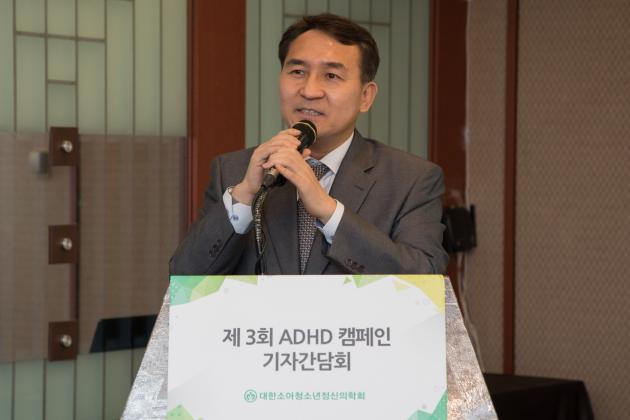Korean parents are by and large likely to leave children with ADHD untreated because of the stigma and labeling effect associated with the disease, according to the Korean Academy of Child and Adolescent Psychiatry.
“A behavioral survey carried out at school revealed that around 5 percent of students were advised to go to a clinic for treatment but around half didn’t go,” said Professor Kwon Yong-shil from St. Mary’s in Uijeongbu at an ADHD press conference held in Seoul Thursday. “The main reasons were that the parents didn’t think it was a big deal or were strongly repulsed by the idea of treatment.”
But, the professor noted, the most significant reason for not getting treatment for ADHD was due to a lack of information.
“A lot of teenagers stop getting treatment because they do not have enough information that teaches them about the necessity of continual treatment. This leads to ADHD teens carrying out impulsive behaviors, having little impulse control, and developing a victim mentality, which ultimately results in them becoming isolated from society,” he said.
Attention Deficit-Hyperactivity Disorder (ADHD) - a neuropsychiatric disorder characterized by problems paying attention, excessive activity, and difficulty controlling impulsive behavior - is underdiagnosed and undertreated in the country, the association said.
Although no data clarify the exact number of patients in Korea, a five-year survey from the association showed that around 360,000 children, 200,000 teenagers, and 1,500,000 adults could qualify for the condition.

“ADHD is a continual neuropsychiatric disease that continues throughout life cycles from childhood to adulthood,” said Chairman Kim Bong-suk of the psychiatric association. “Because these years are a sensitive and important transitional phase wherein teens form individual personalities and relationships, it is necessary for them to get comprehensive treatment for transiting into adulthood successfully.”
The speakers noted that the condition is chronic and getting treatment at the correct time is essential for controlling symptoms and function well in day-to-day life. The association pointed out that 70 percent of children diagnosed with ADHD continue displaying signs until adolescence, and 50 to 65 percent display symptoms until adulthood.
Despite a large number of potential patients and necessity of continual treatment, however, data showed only around 20 percent of all Koreans with ADHD continually received it with only 22 percent of children and 13.5 percent of adolescents taking therapies – both of which are “extremely low” numbers, according to the association.
Left untreated, children, adolescents, and even adults with ADHD could suffer from severe social repercussions, said association director Kim Boong-nyun, who carried out a diagnostic interview schedule for 232 school children. The study found that children diagnosed with ADHD were three times more likely to develop depression, two times more likely to get anxiety disorder, and 20 times more likely to develop behavioral problems compared to children without the illness.
Data from the Youth Detention Center also showed that the teen ADHD incidence rate was around 17 percent, marking an “extremely high” number compared to the average 4 to 8 percent ADHD incidence rate among the general teenage population.
One barricade to treatment included the fact that ADHD onset coincided with the “rebellious” years of teen years, leading to symptoms getting overlooked and misunderstood as hormonal changes. Other barriers included the mostly negative social perception surrounding mental illness and treatment, the stigma associated with ADHD, and the labeling effect correlated with drug therapies.
Most Korean parents often temporarily stop treatment if they do not see their child display any violent or severe problem behavior or also if they get satisfactory school grades. Teenagers themselves often do not feel the need for treatment because they develop a tendency to become more independent and take care of themselves.
Despite the low treatment rate, Kim Boong-nyun pointed out that the number of patients getting treatment jumped two-fold since the Korean Academy of Child and Adolescent Psychiatry began running its ADHD campaign in 2015. Data showed the treatment rate for children rising from 11 to 22 percent, teens from 6 to 13.5 percent, and adults from 0.3 percent to 0.7 percent.

